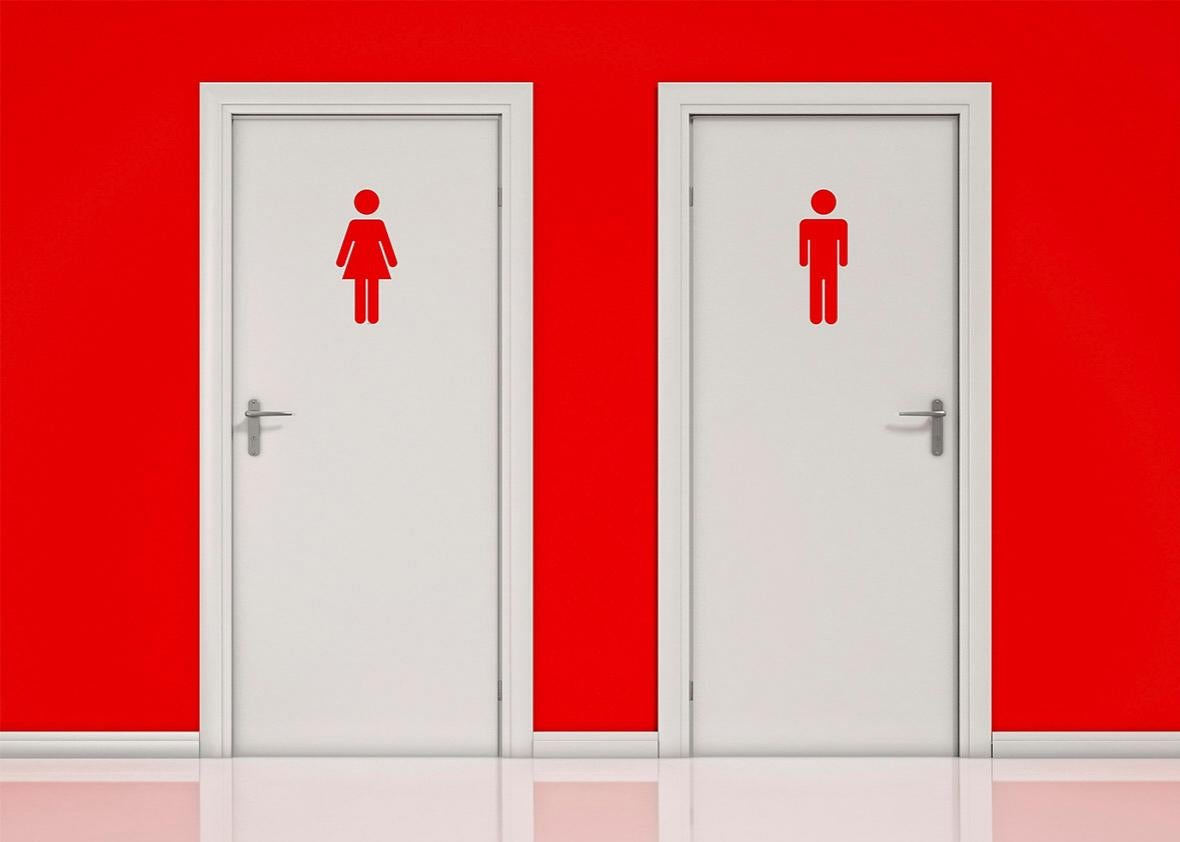What if I told you that there was a simple, straightforward action that cisgender women who support transgender rights could take that would change the terms of the debate about trans bathroom access? There is something, and it is as radical as it is easy to do. What’s more, it’s available to anyone who currently uses the women’s bathroom without fear of being asked to leave.
Until now, the issue of bathroom access has been treated primarily as a matter for legislatures and courts, while the role of ordinary people has been to come out for or against bathroom access in tweets and Facebook posts, and maybe, eventually, to vote for politicians who agree with them about transgender rights.
There is another option, however, a step that ordinary people could take today that would raise the visibility of trans supporters, increase empathy for the experience of trans women, and help create safe spaces for all women to pee in peace: Cisgender women—and others who are currently able to use the ladies’ without causing a fuss, including nonbinary folks and early transition trans men like me—could stop using women’s bathrooms en masse, and make the men’s room a safe unisex bathroom by default.
Fear of “men” in the women’s room is a powerful thing—powerful enough to inflame passions, enact bigoted laws, and inspire mean-spirited campaign ads. On the other hand, fear of women in the men’s room is all but nonexistent. Cisgender men might feel a little awkward if a woman waltzes by the urinal and into an empty stall, but they are unlikely to feel threatened or endangered by it. Women who do not possess an irrational fear of peeing in the proximity of men are therefore in a unique position to model trans-friendly bathroom behavior and choose to use the men’s public restroom without making anybody feel unsafe and with very little risk of having a frightened restroom user call security or law enforcement to eject them.
There are a lot more cisgender women in the world than trans ones, which means that if a significant number decided to use men’s bathrooms, it could boost the visibility of support for trans bathroom access significantly. It could start conversations and maybe change some minds if people saw a woman willingly entering the men’s room and escaping unharmed. Most of all, it would put the lie to the myth that women are always in danger if they happen to be peeing next to men.
Forcing trans women to use the men’s room presents legitimate safety concerns. But cis women would have the luxury of avoiding the men’s room if they had reason to fear doing so—cis women choosing this approach could still exercise common sense in deciding when and where to make this statement, avoiding the men’s bathroom in situations that felt sketchy or unsafe. Meanwhile, in other situations—in their workplaces, in restaurants or movie theaters, or wherever the vibe was sober, calm, and well-populated—women using the men’s restroom would have little to fear, because most men are not rape-mad animals who cannot resist attacking every woman who pees within 50 feet of them.
Using the men’s room in an act of protest would have another positive effect: It would give willing cisgender folks a taste of the awkwardness and uncertainty that comes with walking into a restroom where a strong social custom says you don’t belong. For transgender people, it’s hard to avoid occasionally feeling as if you’re not welcome, wherever you decide to pee, but that’s a feeling others can share willingly—it’s part of the experience of transgressing gender norms, and anyone can try it.
Most states don’t have laws governing which restroom a person can use, which means that until now the segregation of bathrooms has been nothing more than a social custom. Social customs, by definition, are vulnerable to social change. But social change has to start somewhere, and having women entering men’s rooms willingly is as good a starting point as any. As people become used to seeing all genders sharing the same sinks and hand dryers, the taboo will start to decrease, and the fear of sharing facilities will come to seem old-fashioned and silly.
When it comes to legal fixes, many advocates for transgender causes, particularly those who take into account the needs of nonbinary individuals, believe that unisex bathrooms would be a better solution to the problem of bathroom access than allowing people to enter the bathroom that best agrees with their binary gender identity. This is because nonbinary and gender-nonconforming individuals lack an obvious choice if the bathrooms are segregated along binary lines.
As the law begins to grapple with this issue, it’s not certain where we’ll end up—it’s possible that laws protecting binary trans people could have negative, unintended consequences for nonbinary individuals. Women and men voluntarily sharing the same facilities could change the cultural facts on the ground, opening people’s minds to new possibilities without changing the legal situation one way or the other. This sort of gradual cultural change is the kind that made attending a same-sex marriage normal for many Americans well before the Supreme Court made it the law of the land, or that made it safer for lesbian and gay Americans to be open about their sexuality at work even where no law protects their right to employment. It’s the sort of cultural shift that the legal system needs in order to move the law forward sensibly. Americans who use women’s bathrooms without fear—including nonbinary people and even early transition trans men like me—don’t need to wait for laws to change to take meaningful action to make the men’s room a safe, unisex space where people of any gender can feel comfortable. All that’s needed is the courage to act on our convictions.
